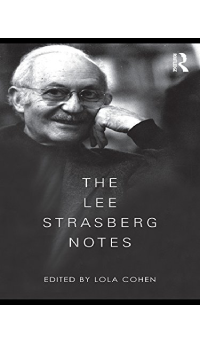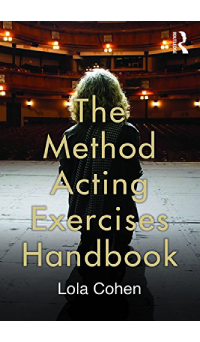We have all seen actors completely immerse themselves in their characters to the point where they transport us to another time and place, and for some of us, that’s why we go to the movies. But how do they manage to achieve it? This article looks at the specific acting approach that can propel artists to life-changing performances.

What is Method Acting?
Method acting is a technique that performers employ to empathize with the characters they are portraying emotionally. In this technique, the actor “becomes” the character and frequently remains in the role for long periods.
The actors are urged to feel the true sentiments they require in each scenario rather than compartmentalize and fake them. This can cause psychological and behavioral changes for as long as they are in the position.

Method acting becomes a self-explanatory journey for the actors as they explore and discover their hidden personal depths. Also, the actor must be ready to go through emotional trauma if they opt for method acting. To move the audience through their performance, the actor ought to step out of their comfort zone and wear the character’s shoes, telling the audience that it’s not just a random character on stage but one that long lasts in their memory.
History of Method Acting
Lee Strasberg and Elia Kazan advanced method acting and introduced it to American acting studios in the 1930s. Strasberg suggests that the actor should live the character throughout and not just on stage or in front of the camera as far as method acting is concerned. Therefore, the actors dedicate themselves to the role by gaining and losing weight, changing their sleep time, following a diet schedule, and becoming the “character” as per the script.
However, the technique was invented in the early 1900s by Konstantin Stanislavski, a Russian actor and theatre director. Stanislavski did not coin the term “method acting” at the time, but his concepts established a framework for performers to create credible characters. Stanislavski’s method urged the actors to use personal experiences and memories to elicit genuine emotions and connect with the characters. This was in sharp contrast to the period’s more traditional, theatrical, and classical acting.

Konstantin Stanislavski.

Lee Strasberg
Key Elements of Method Acting
Relieving tension
According to Strasberg, performers must be on a blank slate before taking on the life of another person. Therefore, before constructing a character, performers must first understand where they hold tension in their bodies and how to release it.
Focus and deliberateness
After releasing the tension, actors are urged to absorb the world in new ways, such as focusing on specific noises or filtering out others. Actors must pay close attention to their senses to recreate believable stimuli in their work. Vision, touch, and even taste are all subjected to the same activities.
Using sense memory
Actors enter into sense memory, the Method’s counterpart of Stanislavsky’s affective memory, once their senses are tuned. The most contentious aspect of the Method is this.
Identification and Replication
The actor’s capacity to recognize and duplicate feelings generate an authentic response, giving them artistic agency. Rather than being a puppet, the trained Method actor, according to Strasberg, influences the work’s very nature as much as the writer or director.
Method Acting Exercises
Relaxation
Actors are asked to move every part of their bodies in little circles, from their fingers to their facial muscles, as part of common relaxation practice. Actors sense and release tension with each movement. Actors are urged to produce “ahh” sounds as needed to relieve any lingering emotional strain.
Using Sense Memory
Sense memory exercises encourage actors to recall physical sensations from memory using all five senses. Actors use sense memory exercises to concentrate on arousing feelings to develop rich responses on stage or set. For example, actors may be asked to recollect a specific, intense ache they had as a youngster in their bedroom.
Private Moment
Actors conduct an activity on stage that they would normally do in private in this practice. The exercise should be so intimate that it would come to a halt if another person entered the room, such as studying your pores in a magnifying mirror or doing an awkward dance. Strasberg also advised actors to become aware of the sensations and textures of essential personal things to observe how they handled and treated them.
Animal Exercise
Strasberg would have his students walk and behave like animals or speak in gibberish as another exercise to shake society’s patterns and habits out of their system.
The Song and Dance
This exercise aims to break actors out of their routines and into a condition of true, surprising expressiveness. Actors are instructed to sing a familiar song one syllable at a time, accompanied by unique, unpredictable, and unprepared actions for each syllable.
Is Method Acting Dangerous?
There’s a tight line between acting as if you’re feeling something on film and then bringing those feelings home with you. It can be challenging to reclaim yourself afterward. Some method techniques are also ones that performers come to regret later in life. When you play with your brain’s psychology, there’s always the risk of negative consequences.
James Franco once penned an op-ed in the New York Times regarding method acting and how it could be to blame for some actors’ unpredictable behavior.
Heath Ledger is a talented actor who was tragically stolen from us way too young. According to research, fully immersed performers “forget themselves” in the sense that they consciously overlook facts about themselves, temporarily subordinating their thoughts and feelings to those of their character.

Heath Ledger as the Joker in The Dark Knight
Examples of Method Acting
Chloe Sevigny
“It happened,” Chloe Sevigny remarked of her renowned method performance in The Brown Bunny. I wish I had the self-assurance I do now. I was self-conscious. ‘What do you regret?’ everyone asks. I know they want me to mention The Brown Bunny, but I’m not going to.”

Chloe Sevigny in The Brown Bunny
Tom Hanks
If you’re an actor, proceed with caution and investigate what you believe; it will bring to your performance. For example, Tom Hanks was not entirely into Method acting when he played Castaway, but he did develop diabetes due to his weight shifting for the character.

Tom Hanks in The Cast Away
Method acting is not inherently risky, but it has the potential to go wrong.
Times when Method Actors Took it too far
Jared Leto
Taking on the role of the Joker is similar to taking on the role of Hamlet. So many well-known actors are vying for the part now because it frequently leads to Academy Award nominations or other honors. It may have stolen Heath Ledger’s life way too young, but it indeed left an impression on the guys who try to play him.
During Leto’s time as the Joker, he went all out, dressing up as the clown prince of crime in some scary ways that cast members did not appreciate. Staying in character when speaking with Will Smith, giving Margot Robbie a pet rat, and giving everyone in the cast anal beads were examples of this.

Daniel Day-Lewis
Method Acting is incomplete without talking about Daniel Day-Lewis, the man, the myth, and the legend. While you may be familiar with his portrayal of Abraham Lincoln, in which the crew was forbidden from discussing current events, and he remained in character the entire time, you may not be aware of the method role that started it all.

Daniel Day-Lewis in Lincoln.
Christy Brown, a paraplegic painter, and writer told her tale in My Left Foot. Brown was diagnosed with cerebral palsy and could only write or type with one foot’s toes. When the time came to make a film about Brown’s life, Day-Lewis stepped in. In between takes, he kept in character.
As a result, members of the team were responsible for feeding the temporary paraplegic. He even tried typing with his toes when it was time to write messages from the set. He also taught himself how to use his toes to place a record on a turntable properly.
This was well worth it, as the actor received his first Academy Award for the role. He chose to live on set for The Crucible. The scene was designed to look like a colonial village with no electricity or running water. Day-Lewis built his own house on location using only the materials available to settlers in 17th-century America.
To further enact the character’s historical period, he refused to wear a typical modern winter coat on the Gangs of New York sets, which nearly caused his death when he contracted pneumonia. He even had a butcher flown in to show him how to cut up carcasses, which was a spur-of-the-moment decision.
He was trained to hunt and remove the skin of wild animals, build wooden boats using ancient Native American methods, and fire and load guns while running for his role as Hawkeye in The Last of the Mohicans (1992).

Daniel Day-Lewis in My Left Foot.
Daniel Day Lewis and Method Acting
Robert De Niro
Actors can also use physical modifications as a method like the ones Robert De Niro and Christian Bale did for Raging Bull and The Machinist, respectively.
For his portrayal as Jake LaMotta, De Niro gained 60 pounds and commented, “I began to appreciate what a fat man goes through… Your legs break out in rashes. Your legs rub against each other.”

Robert De Niro in The Raging Bull.
De Niro sticks to the process, as evidenced by several of his films. For example, he worked 12-hour shifts as a Taxi Driver, picking up customers in New York City during set breaks. This kind of commitment can be seen in all of De Niro’s best films.
De Niro reportedly paid $20,000 for tooth treatment while playing the menacing Max Cady in the 1991 adaptation of Cape Fear. He had his teeth ground down to make himself look more threatening. As a result, many on-site were concerned about De Niro’s health and heavy breathing.
Christian Bale
Christian Bale shed 65 pounds in four months on a strict diet of water, coffee, and one apple each day to cast as an insomniac patient in The Machinist.

Christian Bale in The Machinist
Christian Bale and Method Acting
Forrest Whitaker
When Forrest Whitaker was cast as Ugandan dictator Idi Amin, he traveled to master the language. He also learned to speak Swahili well and spent time with Amin’s close friends and family to perfect the character’s demeanor. What we got was an excellent performance that even Ugandans who despise their tyrant described as frightening and true.

Forrest Whittaker in The Last King of Scotland
Charlize Theron
While many guys are recognized for their method of acting, they are far from alone. In the film Monster, Charlize Theron used method acting techniques. For the part, she gained 30 pounds and did extensive makeup to transform herself into an unfathomable figure.

Charlize Theron in Monster.
Natalie Portman
Natalie Portman uses the technique in her performances as well. But she’s also aware of the dangers, claiming that she was frightened of dying while on the set of Black Swan. So for the job, she shed 20 pounds by eating only carrots and almonds and spent eight hours a day in rehearsals.
She told Entertainment Weekly, “There were certain nights when I believed I was going to die.” “It was the first time I realized how engrossed you can become in a character to the point where it might drag you down.”

Natalie Portman in Black Swan
Natalie Portman Training for Black Swan
Marlon Brando
One of the first performers to use the method acting technique. To prepare for The Men, Brando spent a month in a hospital bed, putting himself in the psyche of the disabled warrior he had been portraying. In Brando’s better films, he appears to be embodying the role rather than acting.

Marlon Brando in The Men
Hilary Swank
Hilary Swank spent a month living as a boy in preparation for her role as a transgender man in Boys Don’t Cry. She shed a lot of weight to make her cheeks look hollow, covered her chest, and stuffed socks into her jeans to feel more like a boy.

Hilary Swank in Boys Don’t Cry
Dustin Hoffman
Hoffman allegedly deprived himself of so much sleep while filming Marathon Man that he reportedly stayed awake for two days before filming a few sequences. Laurence Olivier, a fellow actor, supposedly suggested, “Why not attempt acting?” because he was in such horrible form. It’s a lot less difficult.”

Dustin Hoffman in Marathon Man
Adrian Brody
The Pianist’s Oscar win was perhaps more of a relief than anything else. Adrian Brody didn’t only lose weight or master the piano by studying for four hours every day to play the Holocaust survivor. Instead, he abandoned his entire existence and cut himself apart from civilization. Brody took up his housing and car and his phone and traveled to Europe to play his character. He, in turn, had to say goodbye to his lover.

Adrian Brody in The Pianist
Kate Winslet
Winslet practiced her German dialect at home with her family to play a Nazi guard in The Reader. However, it took her several months to get back to herself after filming.

Kate Winslet in The Reader
Jack Nicholson, Christian Bale, Rooney Mara, Michelle Williams, Val Kilmer, and Shia LeBeouf are just a few of the numerous Method actors.
At one point or another, they’ve all completely immersed themselves in their characters to deliver the most authentic performance imaginably.
It’s debatable if it’s always worthwhile, but there’s no doubting the bravery, skill set, and honesty that performers bring to their characters when they use this technique.
How can I anticipate my acting to change as a result of the Method?
Audiences will be able to see how you think
Using the Method improves your capacity to internalize the cognitive processes of the character. This permits the audience to see a character’s decisions and realizations as they happen in real-time.
Your performances will become more focused
You can find meaning in every word your character says once you’ve honed your capacity to make careful choices.
Your character development will be more creative
Using your sense of memories expands your choices beyond the confines of the script. Integrating your own life experiences, perceptions, affinities, inclinations, instincts, and anxieties into your character adds new dimensions to your personality.
How Does the Method Stack Up Against Other Well-Known Acting Techniques?
The Method has influenced the majority of modern acting techniques. Like the Method, Stella Adler’s imagined conditions and Sanford Meisner’s repetition exercises arose from Stanislvaky’s approach. Stanislavsky’s System was also a source of inspiration for David Mamet and William H. Macy’s Practical Aesthetics approach.
The acting approaches that best complement the Method, on the other hand, are probably the ones that work against it. Obsessive internalization is one of the most serious dangers that the Method may bring. Method performances can become self-absorbed and excessive if they are not balanced.
Do some Brechtian-style physical training to balance out the Method’s mental effort. Viewpoints, the Suzuki Method, Grotowski training, and commedia dell’arte workshops are all worth looking into. These sweaty, athletic actor training protocols will be just as valuable to you as the Method. Moreover, they’ll supplement your Method training by putting different parts of your instrument through their paces and providing you with new experiences to apply in your future work.
Where may one Learn More About Method Acting?
The Actors Studio, which is currently part of Pace University in New York, is the traditional home of Method acting. In addition to New York and Los Angeles, the Lee Strasberg Theatre and Film Institute offers Method acting training. Read Strasberg’s book, “A Dream of Passion: The Development of the Method,” if you want to get a head start on his teachings.
These books by former students are also excellent places to start:



Conclusion
You may get some of the best performances on film when an actor goes method, but there’s a narrow line between acting crazy and just acting. Method performances have given us some legends, but you have to ask if getting too deep into parts has taken some away from us or made sets and movies so uncomfortable that individuals have been damaged.













